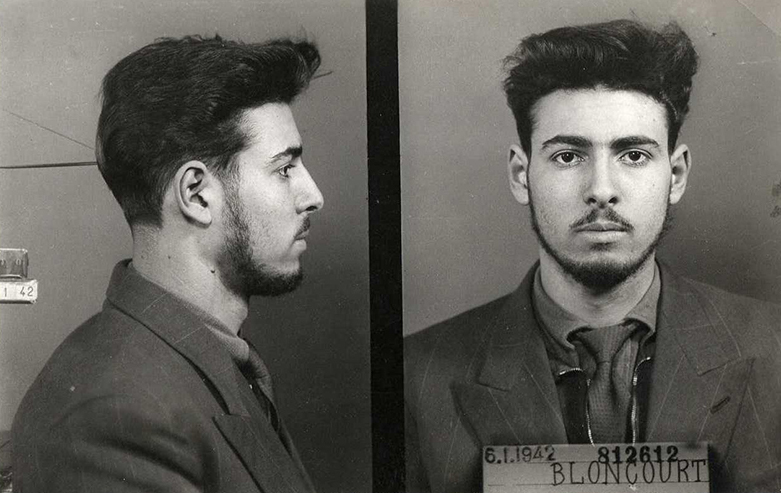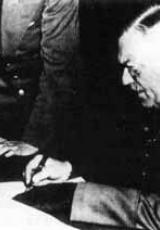Le procès de la chambre des députés : les sacrifiés
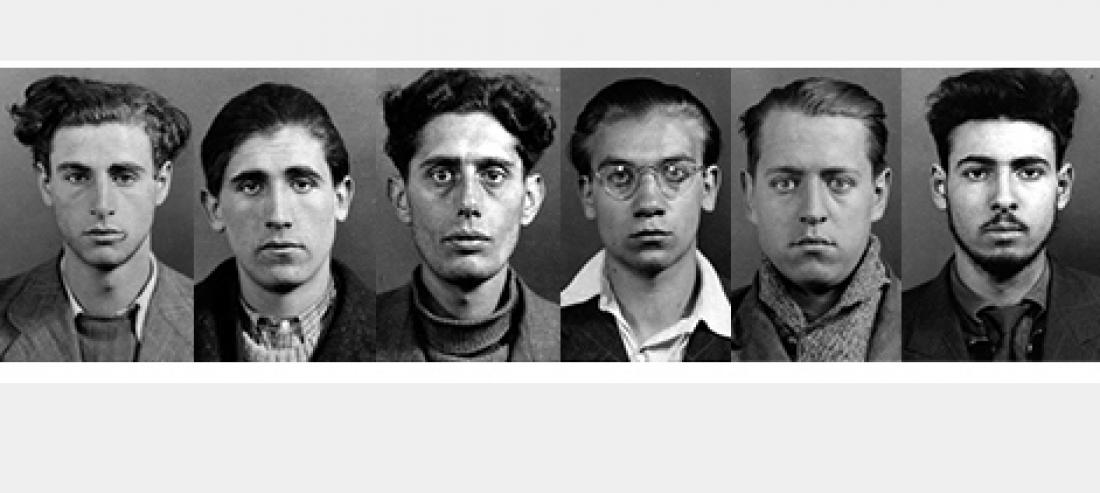
After the French Communist Party (PCF) joined the ”armed struggle”, the occupier reinforced its policy of repression. The judicial process became more radical. From summer 1941, arrested members of communist armed groups were judged by German military tribunals and sentenced, usually to death. This was the context in which the trial of the young communist irregulars of the 11th arrondissement took place.
On 4 March 1942, when Roger Hanlet, Pierre Milan Acher Semahya, Fernand Zalkinow, Robert Peltier, Christian Rizo and Tony Bloncourt (see slideshow) were referred to the German military tribunal of Gross-Paris, they did not know that they were involuntary participants in a world first. Their hands cuffed behind their backs, they entered the immense white, red and gold ballroom of the Hôtel de Lassay, which linked the Chamber of Deputies with the president's residence in the Palais Bourbon. Transformed into a temporary courtroom, lit by five monumental chandeliers, the space housed the first of a series of show trials organised by the Militärbefehlshaber in Frankreich (MBF, the German military command in France) for propaganda purposes following the first attacks against the occupying army.
Acquittal or death
The seven communists, members of the Youth Battalions, were on trial for guerilla activities between August and October 1941, a charge that could only lead to acquittal or the death penalty under the German law in force at the time. The charge sheet referred to 17 attacks, including ”attempted assassinations, fires and damage caused to garages, a transmission station and railway lines...”.
Seated in two rows, the accused faced three judges sitting behind a long table covered with a green cloth, dominated by an enormous Nazi flag: the military legal adviser Hans Gottlob, a notorious Nazi and anti-communist, chaired the hearings, assisted by two assessors (see slideshow). At either end, the prosecutor and the clerk of the court faced each other. Another table bore the weapons, munitions, explosives and leaflets seized by the French police during their searches. To the left of the accused, seated beside the interpreter, their noses in their brief notes gleaned from their clients a few minutes before the hearing as they met them for the first time, the six state-appointed lawyers of the Paris bar prepared their arguments. Finally, to their right was a throng of journalists and a team of cameramen from the Deutsche Wochenschau, the German cinema news service.
Seven accused, seven condemned
By summoning the ”authorised press” for the first time, in such a symbolic location, to cover a trial at a German military tribunal, in this case the Gross-Paris tribunal Section B, which normally sat behind closed doors in Rue Boissy-d'Anglas, the new military commander of the German occupation forces in France, Karl-Heinrich von Stülpnagel, expected to produce a ”considerable impact”. Like his cousin Otto von Stülpnagel, whom he had replaced a few days previously, he was counting on the deterrent effect on French public opinion, which he hoped to turn against the armed resistance. He also wanted to prove to the highest authorities in Berlin that the MBF's military and judicial repression of Moscow-influenced terrorism, with which the French police were collaborating, was more of a deterrent than the large-scale executions of hostages imposed by Wilhelm Keitel, marshal and supreme commander of the German armed forces (Generalfeldmarshall), whose unpopularity with the French was, from his point of view, strategically counter-productive.
But who were the accused, who were well aware that following this simulacrum of a normal trial - a ”joke judgement”, as Fernand Zalkinow wrote in a letter smuggled out the day after the verdict - they would all be condemned to death and shot? How did these young workers and students come to be radicalised? How did they move in summer 1941 from the propaganda wing to the armed groups of the Jeunesses communistes (JC, Communist Youth), a step that the vast majority of communists refused to take throughout the Occupation? The question cannot be answered without recalling their extreme youth. The average age of the seven resistance members was only twenty (they were aged from 18 to 27). Single and childless, the accused were not moderated in their commitment by family responsibilities. The typical characteristics of their age are also a factor: their naivety, which their leader Gilbert Brustlein, a few years older, sketched with humour and affection towards the end of his life; their careless attitude to danger; their thirst for adventure and for the absolute; their desire to serve a party which, if we might dare a hypothesis, took on the role of a father to the four fatherless members of the Brustlein group (Brustlein, Semahya, Rizo and Milan). Their superiors often inspired their respect. Slightly older and appointed by the party, bathed in an aura shaped by the struggle, they made the most of their authority so that their young colleagues, wishing to assert themselves, would prove their worth. As well as the obedience expected of them, there was the pressure to follow their ”mates”. Most of the accused came from the same backgrounds, lived in the same neighbourhoods, shared the same leisure activities and frequented the same places. While comradeship was one of the main drivers for engagement in the communist armed struggle, it exposed the partisans dangerously when the police closed in for the kill.
The fall of the ”Brustlein Group”
The criminal brigade of the Paris Prefecture of Police, based at 36 Quai des Orfèvres, discovered the traces of the group in October 1941 thanks to a chance tip-off about a young man ”linked to people who take part in attacks on railway lines”. He was identified and monitored and his address discovered, and ”no. 36” could start a tailing operation: Pierre Milan and Roger Hanlet were discovered after a few days and immediately apprehended. Required by the urgency of the situation, at a time when hostages were being executed, this unusual haste, though potentially counter-productive, did not ”break” the case. Roger Hanlet immediately gave detailed confessions to Commissioner Veber, the head of the criminal brigade: manipulated psychologically by this experienced detective, the young resistance agent poured out everything he knew, which was a lot. The police were able to conduct their investigation quickly and apprehend other combatants, who were also forced to confess. The criminal brigade was now in a position to establish each individual's role: Gilbert Brustlein, the leader of the group, who would probably also have been arrested if the police had not stopped their tailing operation prematurely, became a priority target in view of his responsibilities and his proven participation in an attack that had cost the life of Feldkommandant Hotz (responsible for the occupation troops in the district of the lower Loire) in Nantes, triggering the execution of many hostages in retaliation.
Remaining elusive for the moment, notable by his absence from the trial, Brustlein accumulated column inches in the occupied zone's press, such as the collaborationist Paris papers Paris-Midi and Paris-Soir, Aujourd'hui, Le Matin, Le Petit Parisien and especially Jean Luchaire's Les Nouveaux Temps, Jacques Doriot's Le Cri du Peuple and Marcel Déat's L'Oeuvre, not to mention the Pariser Zeitung, the newspaper of the occupation troops (editions in German and French), which published many long articles about the trial of the ”Brustlein terrorist group”. The Pariser Zeitung, whose editorial line was to ”describe German life” and explain ”German thought”, published detailed reports on the ”debates” over three days, quoting entire passages from the prosecution case and predictions as to the verdict.
Too much media attention?
Perhaps too much for the taste of Dr Bälz, the head of the Justice group of the administrative staff, responsible in particular for guaranteeing that Germany's policy of repression complied with international law and the terms of the armistice. In a previously unseen letter of 16 March 1942 (see slideshow), conserved by the Service historique de la défense (SHD, Defence Historical Service), he expresses a fear that the German prosecutor's phrase ”the blood of countless hostages”, published in the press, could be used by the Allies to stigmatise the MBF's policy of repression at a time when the MBF was seeking to limit executions of hostages for tactical reasons. His recommendation to the German judges to avoid ”costly political remarks” in the summings-up and judgements appears to have been heeded.
Although it was covered in full by the Pariser Zeitung, the second trial of young communist ”terrorists” opened to the press, organised in early April in a less prestigious location, the Maison de la Chimie, attracted less media attention from the French press. Most of the newspapers contented themselves with publishing a Havas-OFI press release when the trial began and another when the verdict was announced (25 death sentences). As these sham trials did not have the hoped-for effect on the French population, nor on the frequency of attacks, the third trial of the Organisation secrète (OS, secret organisation) (16 death sentences) took place behind closed doors in the ballroom of the Hôtel Continental between 24 August and 9 September 1942 and resulted in just a few short items in the French papers.
Analysing the German military tribunal files conserved by the SHD will make it possible to estimate the impact of Dr Bälz's recommendations, even though the MBF strategy had changed in the meantime. Nevertheless, the verdicts pronounced following these trials did dissuade some militants from engaging in armed struggle. They saw the guerillas as ”sacrificial offerings”.
Boris Danzer
Historical consultant and editor
& Franck Liaigre
Historian, specialist in the Resistance and the Occupation,
member of CESDIP (CNRS/Ministry of Justice)
FOR MORE INFORMATION
The file on the Chamber of Deputies trial, numbered GR 28 P 8 50/215, can be consulted in the reading room. The Service historique de la défense also conserves the individual resistance agents' files of five of the seven condemned men: Acher Semahya (GR 16 P 544405), Fernand Salkinow (GR 16 P 606148), Robert Peltier (GR 16 P 464641), Christian Rizo (GR 16 P 513607) and Tony Bloncourt (GR 16 P 65094).
The archives of the Prefecture of Police also hold documents on the case (including the identity photographs of the accused shown in the slideshow).
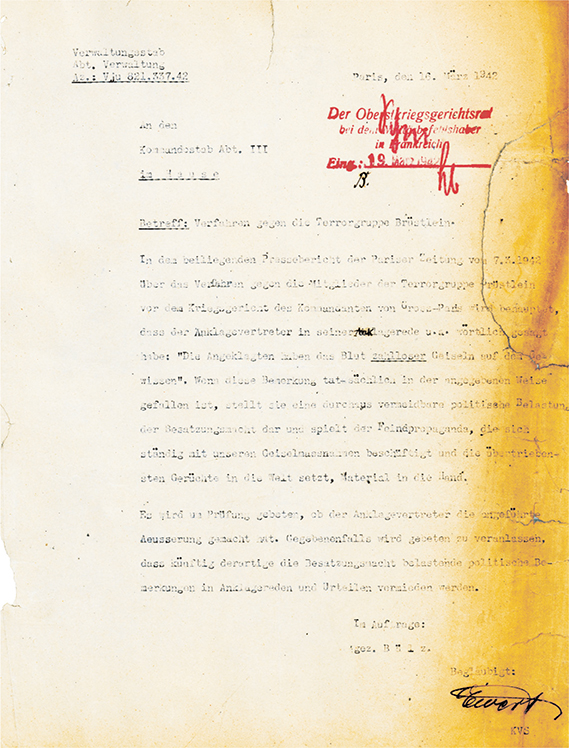
Lettre du Dr Bälz, responsable du groupe Justice de l'état-major administratif, 16 mars 1942.
© SHD
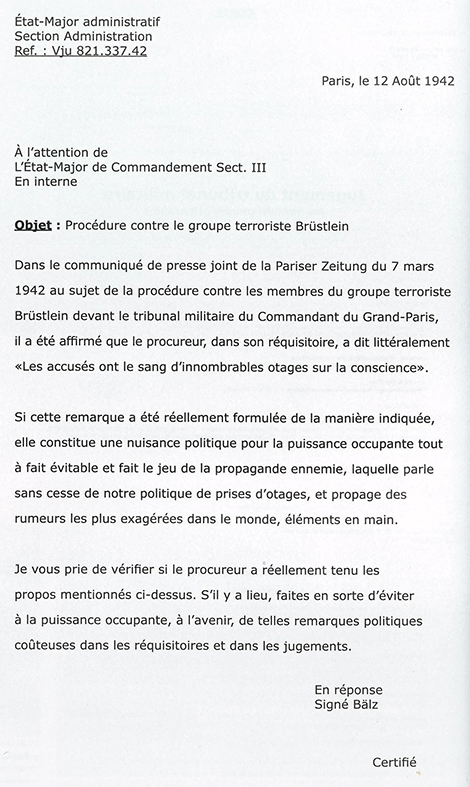
Lettre du Dr Bälz, responsable du groupe Justice de l'état-major administratif, 16 mars 1942 (traduction).
© SHD
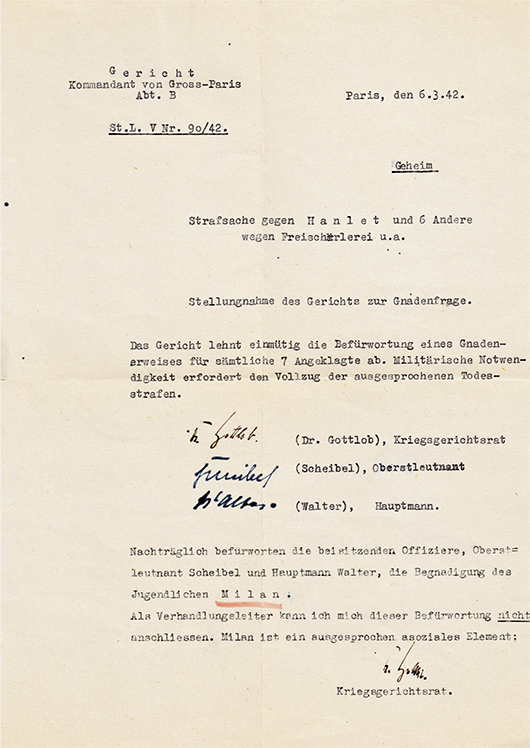
Pièce de procédure, procès de la Chambre des députés, 6 mars 1942 (extrait).
© SHD
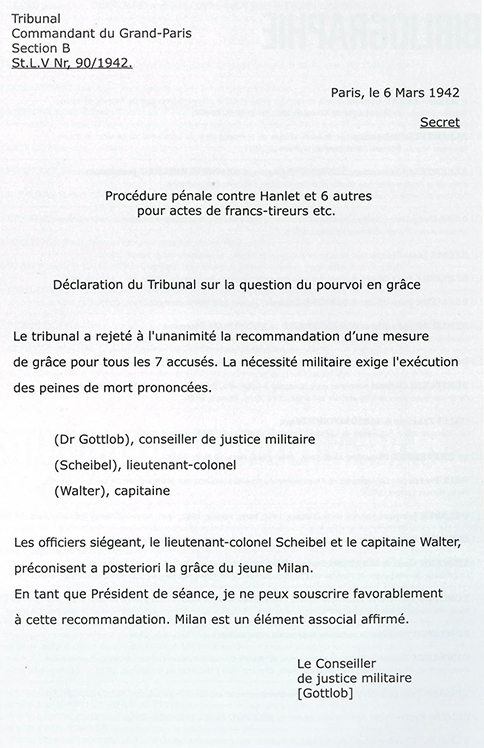
Pièce de procédure, procès de la Chambre des députés, 6 mars 1942 (extrait-traduction).
© SHD
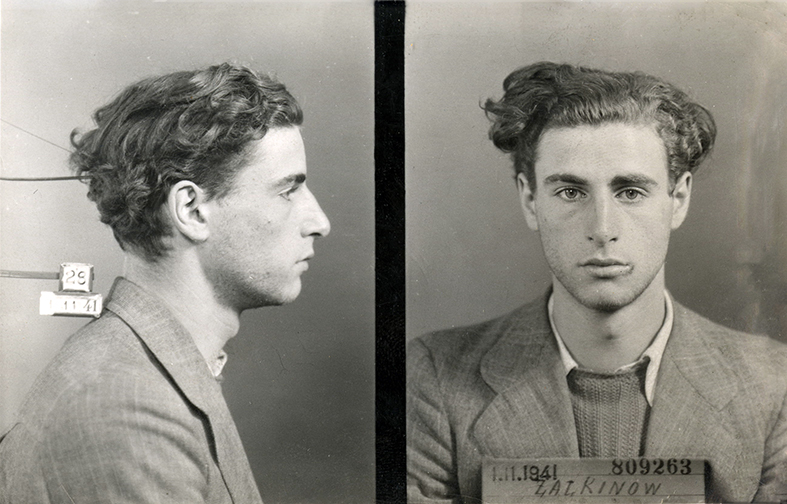
Photographies anthropométriques de Fernand Zalkinow.
© Archives de la Préfecture de police
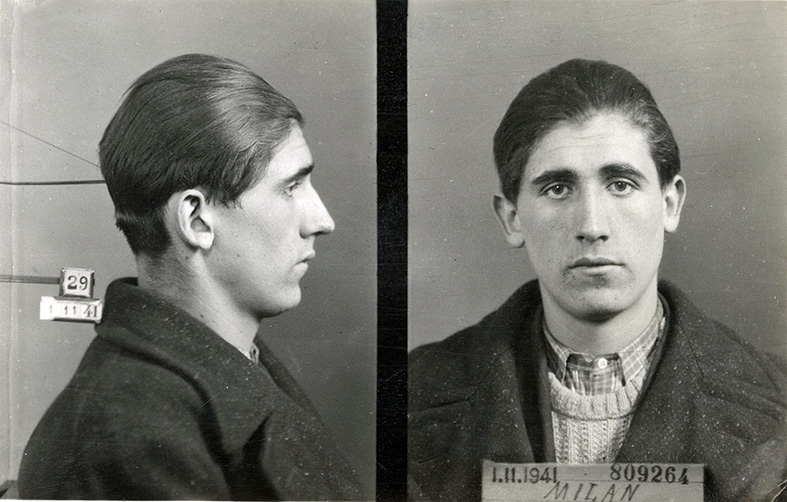
Photographies anthropométriques de Pierre Milan.
© Archives de la Préfecture de police
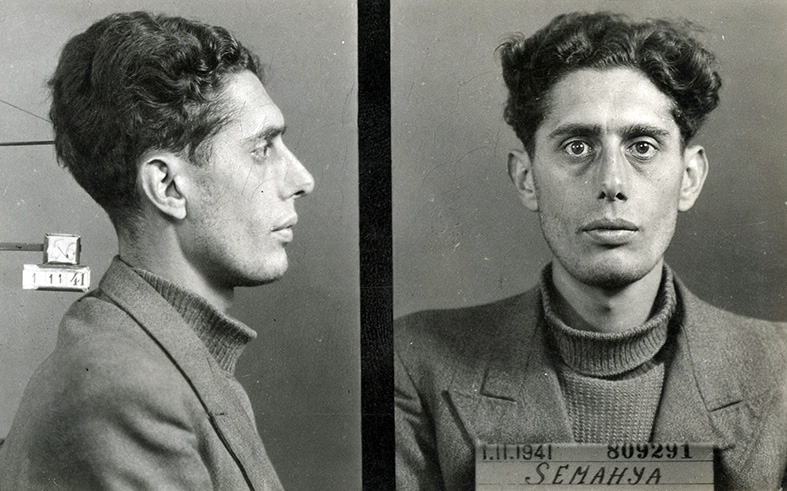
Photographies anthropométriques d'Acher Semahya.
© Archives de la Préfecture de police
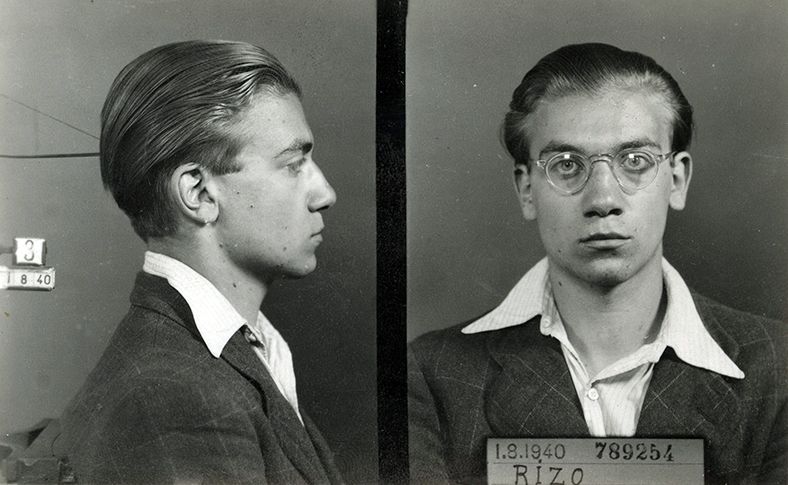
Photographies anthropométriques de Christian Rizo.
© Archives de la Préfecture de police
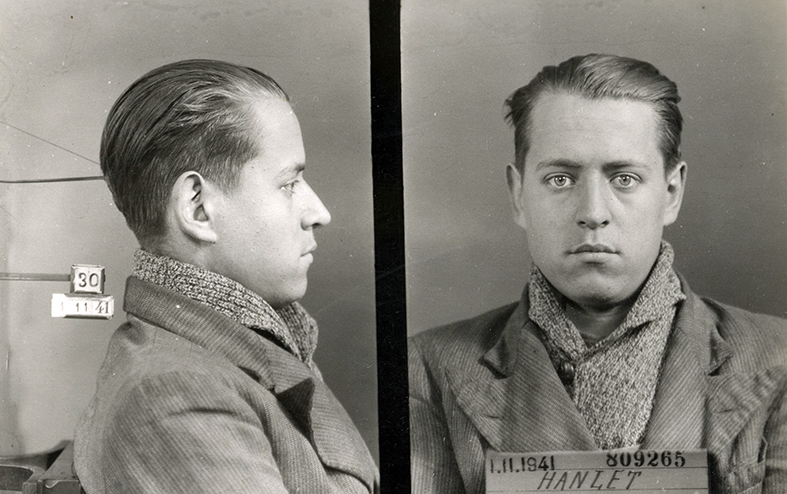
Photographies anthropométriques de Roger Hanlet.
© Archives de la Préfecture de police
